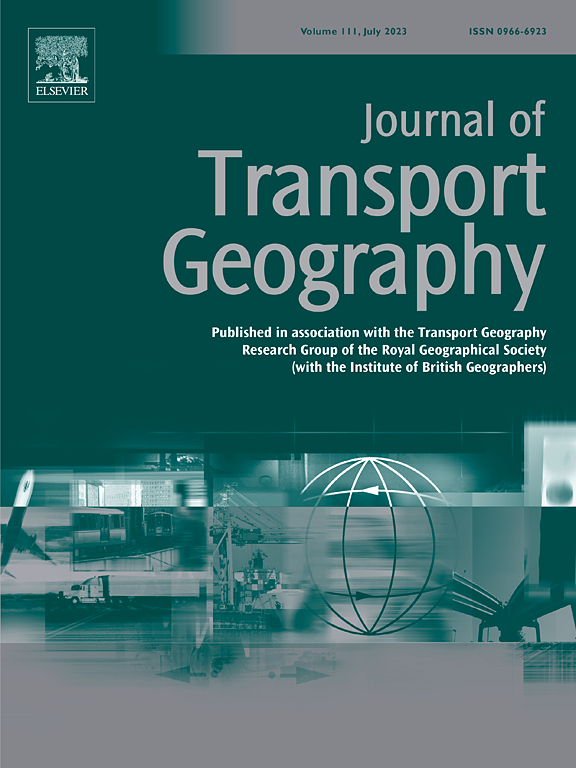E-bike ownership and use determinants and their trends in the Netherlands
IF 5.7
2区 工程技术
Q1 ECONOMICS
引用次数: 0
Abstract
The global e-bike market has been growing significantly in recent years and is expected to keep expanding in the coming years. While many scholars have looked into e-bikes from operations management and user perspectives, the roles of different socio-demographic and built environment factors in e-bike ownership and use are less studied. Especially, how this role changes over time is rarely investigated. This paper explores i) how e-bike ownership and use have changed over time in the Netherlands, ii) how e-bike ownership and use relate to different socio-economic and built environment determinants, and iii) how these relationships have changed over time. Ten binary multinomial logistic regression models are developed to analyze how various determinants affect e-bike ownership and e-bike use respectively, using eight years of travel data from the Dutch national mobility surveys (2014–2021). The results show that e-bike ownership and use in the Netherlands have experienced consistent growth over time. Throughout the study period, e-bikes are becoming more widely adopted across diverse socio-demographic groups, and the influence of household size, household income, age, gender and education on e-bike ownership and use is decreasing. Interestingly, the penetration of e-bikes in non-urban areas is growing. Future urban and transport policies are recommended to take advantage of the growing e-bike adoption and the shifts in the socio-demographics and the residential locations of its adopters.
近年来,全球电动自行车市场大幅增长,预计未来几年还将继续扩大。虽然许多学者从运营管理和用户角度研究了电动自行车,但对不同社会人口和建筑环境因素在电动自行车拥有和使用中的作用研究较少。尤其是这种作用如何随时间而变化的研究更是少之又少。本文探讨了 i) 在荷兰,电动自行车的拥有和使用随着时间的推移发生了怎样的变化;ii) 电动自行车的拥有和使用与不同的社会经济和建筑环境决定因素之间的关系;iii) 这些关系随着时间的推移发生了怎样的变化。利用荷兰全国流动性调查(2014-2021 年)的八年出行数据,建立了十个二元多叉逻辑回归模型,分别分析各种决定因素如何影响电动自行车的拥有量和使用量。结果显示,荷兰的电动自行车拥有量和使用量随着时间的推移持续增长。在整个研究期间,电动自行车在不同社会人口群体中的应用越来越广泛,家庭规模、家庭收入、年龄、性别和教育程度对电动自行车拥有量和使用量的影响正在减小。有趣的是,电动自行车在非城市地区的普及率正在不断提高。建议未来的城市和交通政策充分利用电动自行车日益增长的使用率,以及使用电动自行车的社会人口和居住地点的变化。
本文章由计算机程序翻译,如有差异,请以英文原文为准。
求助全文
约1分钟内获得全文
求助全文
来源期刊

Journal of Transport Geography
Multiple-
CiteScore
11.50
自引率
11.50%
发文量
197
期刊介绍:
A major resurgence has occurred in transport geography in the wake of political and policy changes, huge transport infrastructure projects and responses to urban traffic congestion. The Journal of Transport Geography provides a central focus for developments in this rapidly expanding sub-discipline.
 求助内容:
求助内容: 应助结果提醒方式:
应助结果提醒方式:


